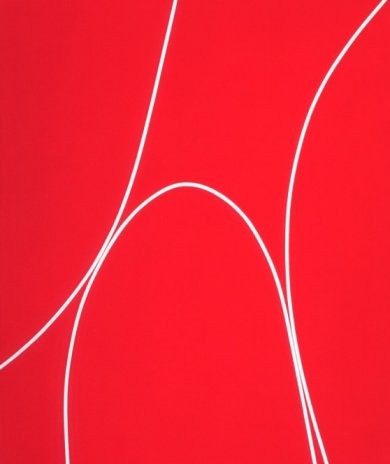Four Abstract Classicists
21 Dec 2013 - 29 Jun 2014

Lorser Feitelson
Hardedge Line Painting, 1963
Enamel on canvas
72 x 60 in. (182.88 x 152.4 cm)
Los Angeles County Museum of Art, anonymous gift through the Contemporary Art Council (M.64.7). © The Feitelson / Lundeberg Art Foundation.
Hardedge Line Painting, 1963
Enamel on canvas
72 x 60 in. (182.88 x 152.4 cm)
Los Angeles County Museum of Art, anonymous gift through the Contemporary Art Council (M.64.7). © The Feitelson / Lundeberg Art Foundation.
FOUR ABSTRACT CLASSICISTS
21 December 2013 – 29 June 2014
Four Abstract Classicists features hard-edge abstractions from LACMA’s collection by Karl Benjamin, Lorser Feitelson, Frederick Hammersley, and John McLaughlin. The term “abstract classicists” was coined in 1959 by curator and critic Jules Langsner to define these four southern California painters whose work he grouped in a seminal exhibition that year at the Los Angeles County Museum in Exposition Park (prior to LACMA’s existence as an independent art museum). The work exemplified the generational shift in the late 1950s and early 60s from the energetic brushwork of Abstract Expressionism to the cooler aesthetics of Pop Art and Minimalism.
The abstract classicists painted forms that are, in Langsner’s words, “finite, flat, rimmed by a hard clean edge...not intended to evoke in the spectator any recollections of specific shapes he may have encountered in some other connection. They are autonomous shapes, sufficient unto themselves”—that is to say, pure abstractions.
21 December 2013 – 29 June 2014
Four Abstract Classicists features hard-edge abstractions from LACMA’s collection by Karl Benjamin, Lorser Feitelson, Frederick Hammersley, and John McLaughlin. The term “abstract classicists” was coined in 1959 by curator and critic Jules Langsner to define these four southern California painters whose work he grouped in a seminal exhibition that year at the Los Angeles County Museum in Exposition Park (prior to LACMA’s existence as an independent art museum). The work exemplified the generational shift in the late 1950s and early 60s from the energetic brushwork of Abstract Expressionism to the cooler aesthetics of Pop Art and Minimalism.
The abstract classicists painted forms that are, in Langsner’s words, “finite, flat, rimmed by a hard clean edge...not intended to evoke in the spectator any recollections of specific shapes he may have encountered in some other connection. They are autonomous shapes, sufficient unto themselves”—that is to say, pure abstractions.
